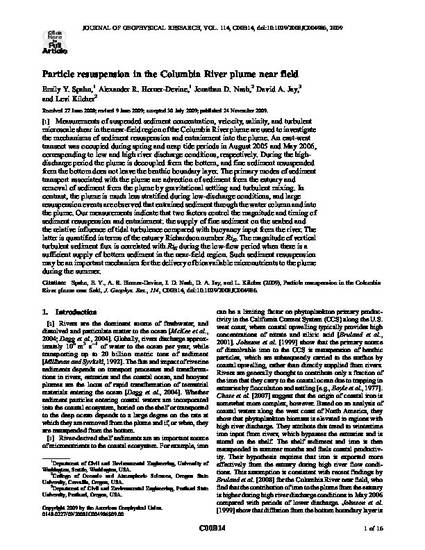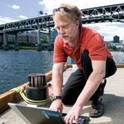
- Columbia River Estuary (Or. and Wash.) -- Environmental conditions,
- Estuaries -- Hydrodynamics,
- Suspended sediments
Measurements of suspended sediment concentration, velocity, salinity, and turbulent microscale shear in the near-field region of the Columbia River plume are used to investigate the mechanisms of sediment resuspension and entrainment into the plume. An east-west transect was occupied during spring and neap tide periods in August 2005 and May 2006, corresponding to low and high river discharge conditions, respectively. During the high-discharge period the plume is decoupled from the bottom, and fine sediment resuspended from the bottom does not leave the benthic boundary layer. The primary modes of sediment transport associated with the plume are advection of sediment from the estuary and removal of sediment from the plume by gravitational settling and turbulent mixing. In contrast, the plume is much less stratified during low-discharge conditions, and large resuspension events are observed that entrained sediment through the water column and into the plume. Our measurements indicate that two factors control the magnitude and timing of sediment resuspension and entrainment: the supply of fine sediment on the seabed and the relative influence of tidal turbulence compared with buoyancy input from the river. The latter is quantified in terms of the estuary Richardson number RiE. The magnitude of vertical turbulent sediment flux is correlated with RiE during the low-flow period when there is a sufficient supply of bottom sediment in the near-field region. Such sediment resuspension may be an important mechanism for the delivery of bioavailable micronutrients to the plume during the summer.

This is the publisher's final PDF. Copyright 2009 American Geophysical Union